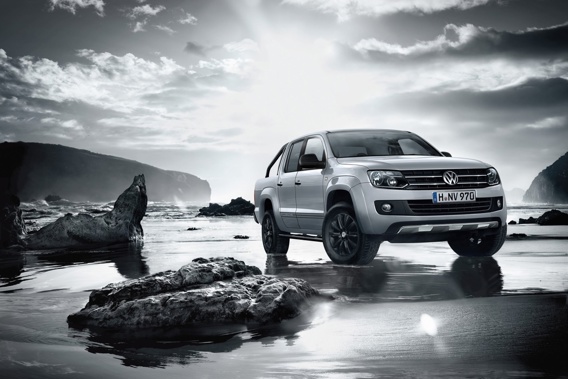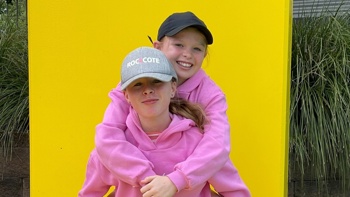
Volkswagen entered what were unchartered automotive waters for the company, when they sailed into the Ute market a few years ago aboard the Amarok, but it’s turned out to be a bountiful voyage.
With the design and engineering horsepower of Volkswagen behind it, the Argentinean built Amarok was always destined to hit real sales pay dirt and that has been pretty much how it’s played out. In the past, the company has produced plenty car based Utes. The real point of difference between them and the Amarok, is the fact that from the day one it was designed and built to be a bona fide Ute. Most importantly, it’s walked the talk since its launch earning a huge amount of sales and respect on Ute markets around the globe. Even buyers here, who can be a tough and demanding bunch, who know what constitutes a decent Ute have taken to the Amarok. One of the reasons for the existence of this model, was the realisation by Volkswagen that a strong selling Ute, was an integral cog in driving their ambitious plans to grow the VW brand globally.
The Ute landscape here has changed a lot in the last two years with the most of the major players fielding either brand new models or close to it. However, the Amarok has a lot more years on the clock and is now one of the old guard in this market segment and feeling a bit of sales heat from the younger competition. However, it came out counter punching late last year with a raft of upgrades significantly and is now the only Ute sold here with an 8-speed automatic. Other features are a full time 4WD system and money saving 20,000km service intervals; most other Utes have 10,000-15,000km service intervals.
Volkswagen have also used the refreshed model as an opportunity to respond to what they say is growing demand for a broader Amarok line-up that now sees a 2WD Automatic version in Highline spec, plus for the first time a well equipped Trendline variant. The 8 Speed Auto is available on a 2WD models. Buyers love automatic Amaroks, with the Auto 4WD the best seller in the range. The 2WD Auto’s make up 17% of the double cab Ute market. This figure will only grow as people increasingly see them as an attractive alternative to an SUV.
A good spread of well-priced models should continue to see sales of the Amarok head north. The 103kw base version sells for $43,990. From there it’s a quantum price leap to $51,990 for the Highline 2WD, with the cheapest 4WD being the just introduced Trendline at $58,990. The top of the range Highline 4WD supplied for this road test came in limited edition Dark Label form and costs $65,990.
Under the bonnet is a strong and gritty 2.0 litre 132kw twin turbo diesel. Volkswagen’s tried and trusted 4motion 4WD technology is used with high/ low gear ratios to take care of rough terrain. Some may be deterred by the Amarok’s engine capacity when the majority of Japanese diesel Ute engines are anywhere between 2.5 and 3.0 litres. They may also be suspicions about the durability of a motor requiring two turbos to pump up the performance volume. Interestingly, the new Mitsubishi Triton and Nissan Navara have dropped their engine capacities to 2.4 and 2.3 litres respectively, with premium models in the Navara line-up getting a twin turbo version of this engine.
While it may have the least engine capacity in its class, from behind the wheel where it really counts, the Amarok drives with genuine punch and purpose, to more than matches the larger engines of its Japanese competitors
Adding a lot of extra performance bite is the new 8-speed automatic. The additional gear levels enable it to achieve a broader gear ratio spread between the 1st and 8th compared to a standard automatic. This lets the motor work even more effectively in every rev range, and it’s more economical. The 8th gear is configured as a fuel-saving overdrive ratio operating at reduced engine speeds. This is one of the smoothest and sweetest autos I have encountered in a Ute and gives the Amarok a decisive edge over its opposition.
An almost aircraft carrier sized rear deck can handle 2.52 m² and a class leading through-loading width of 1,222 mm. These dimensions let you haul everything from a standard sized pallet to a quad bike.
Car like specifications especially on the flag ship Highline allow it to slide seamlessly s into the role of a well-appointed recreational vehicle As you would expect from one of Europe’s largest vehicle manufacturers, the Amarok has impeccable safety credentials, and easily bagged a 5 star ANCAP rating. It achieved this with features such as head/thorax airbags and electronic stability control.
Those who do a reasonably amount off-road driving will appreciate the hill start and hill descent systems. Both make driving on undulating ground more manageable and controlled. Hill start prevents roll back on step inclines, while hill descent takes charge when you are headed in the other direction. It uses a combination of the 4WD system, gearbox and stability control, to safely negotiate steep and tricky slopes. All the driver is required to do is steer the vehicle.
Those good Volkswagen ride and handling genes have handed down to the Amarok. For a Ute that’s large than most, it proved more nimble and surefooted both on and off the beaten track than I expected. Over twisty and uneven roads, body roll is well contained and the test vehicle for the most part, felt secure and well planted on the road. Ride comfort is above par, with the suspension showing commendable articulation in confined spaces and bump absorbing qualities that went beyond the call of duty when the vehicle was arm wrestling its way over gruelling terrain.
What’s the verdict? Volkswagen’s first double Ute is a worthy alternative to the Japanese models that have dominated this market segment for so long.
Take your Radio, Podcasts and Music with you









